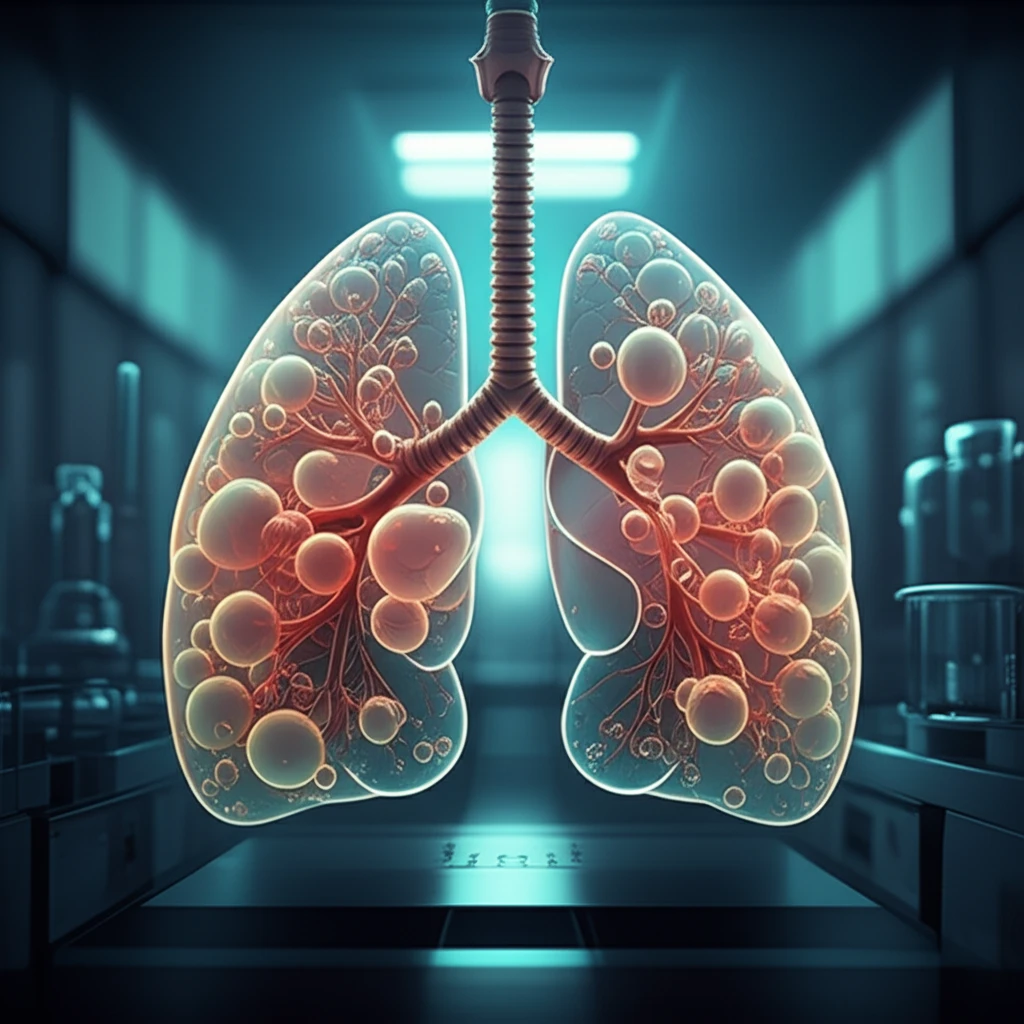
Unlocking Lung Health: The Latest on Pulmonary Alveolar Proteinosis Diagnosis
"A deeper look at blood testing, diagnostic algorithms, and innovative approaches for detecting and managing Pulmonary Alveolar Proteinosis (PAP)."
Pulmonary Alveolar Proteinosis (PAP) is a rare lung disease characterized by the accumulation of surfactant in the alveoli, leading to impaired gas exchange and respiratory distress. Diagnosing PAP can be complex, often requiring a combination of clinical evaluation, radiological imaging, and invasive procedures.
In recent years, significant strides have been made in understanding the pathogenesis of PAP and refining diagnostic approaches. Among these advancements, the role of granulocyte-macrophage colony-stimulating factor (GM-CSF) autoantibody testing has garnered considerable attention. GM-CSF is a cytokine crucial for the development and function of alveolar macrophages, which are responsible for clearing surfactant from the alveoli. The presence of autoantibodies against GM-CSF disrupts this process, leading to the accumulation of surfactant and the development of PAP.
This article delves into the evolving role of blood testing, specifically GM-CSF autoantibody testing, in the diagnosis of PAP. We will explore the perspectives of leading experts in the field, examine the diagnostic algorithms currently in use, and discuss the potential for future advancements in non-invasive diagnostic techniques. Whether you're a healthcare professional, a patient, or simply interested in learning more about lung health, this article provides a comprehensive overview of the latest developments in PAP diagnosis.
The Role of GM-CSF Autoantibody Testing: A Promising but Premature Approach?

The introduction of GM-CSF autoantibody testing has revolutionized the diagnostic landscape of PAP, offering a less invasive alternative to traditional methods such as bronchoalveolar lavage and lung biopsy. However, the implementation of this testing method is not without its challenges. Some experts argue that placing serological testing at the beginning of the diagnostic algorithm is premature, citing concerns about sensitivity, specificity, and standardization.
- Limited Availability: GM-CSF autoantibody testing is not widely available and is often restricted to centers with specialized expertise.
- Lack of Standardization: The methodology and cut-off values for GM-CSF autoantibody testing have not been standardized for clinical use, leading to variability in results and interpretation.
- Cost and Specificity: Other diagnostic tests, such as serum GM-CSF concentrations and bronchoalveolar lavage fluid concentrations of GM-CSF autoantibodies, can be expensive and non-specific.
Future Directions: Paving the Way for Non-Invasive Diagnosis
The future of PAP diagnosis lies in the development of non-invasive techniques that can accurately and reliably detect the disease without the need for invasive procedures. One promising avenue of research is the combination of GM-CSF autoantibody testing with high-resolution CT imaging of the thorax. By integrating these two modalities, clinicians may be able to improve the sensitivity and specificity of PAP diagnosis, paving the way for earlier and more effective intervention. Continued research and collaboration are essential to refine diagnostic algorithms, improve access to testing, and ultimately improve the lives of individuals affected by PAP.
